By Steve & Tamami Laser
While Toyota remains on the cutting-edge of mobility with vehicles like the new Mirai and Prius Prime, its engineers and designers dream about creating something a little more basic – a car that could last a lifetime and be treasured like a family heirloom. Setsuna, Toyota’s latest concept, is a two-seat roadster “time machine” finely crafted primarily in wood.
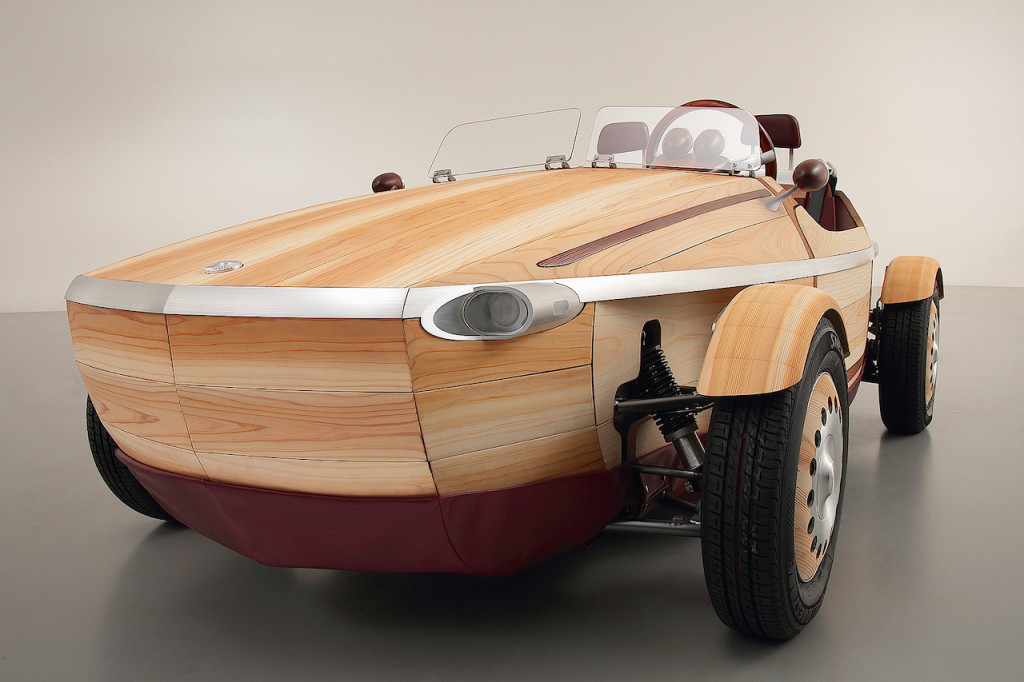 Set to debut at Milan Design Week (Salone del Mobile, Milano) in Italy, scheduled for April 12 to 17, the prototype was conceived to “embody the affection owners grow to feel for their cars, and to show how cars continue to change and offer new value as they are taken care of with love over time.” This should segue nicely in Milan where furniture manufacturers and fashion brands hold events during Design Week to highlight the uniqueness of their products.
Set to debut at Milan Design Week (Salone del Mobile, Milano) in Italy, scheduled for April 12 to 17, the prototype was conceived to “embody the affection owners grow to feel for their cars, and to show how cars continue to change and offer new value as they are taken care of with love over time.” This should segue nicely in Milan where furniture manufacturers and fashion brands hold events during Design Week to highlight the uniqueness of their products.
 Toyota selected a variety of distinctive types of wood for different parts of the car, including the exterior panels, frame, floor, and seats. The automaker says that wood can last for many generations if properly taken care of and it also changes in coloration and texture in response to its environment (particularly temperature and humidity) and conditions of use, taking on a unique character and depth.
Toyota selected a variety of distinctive types of wood for different parts of the car, including the exterior panels, frame, floor, and seats. The automaker says that wood can last for many generations if properly taken care of and it also changes in coloration and texture in response to its environment (particularly temperature and humidity) and conditions of use, taking on a unique character and depth.
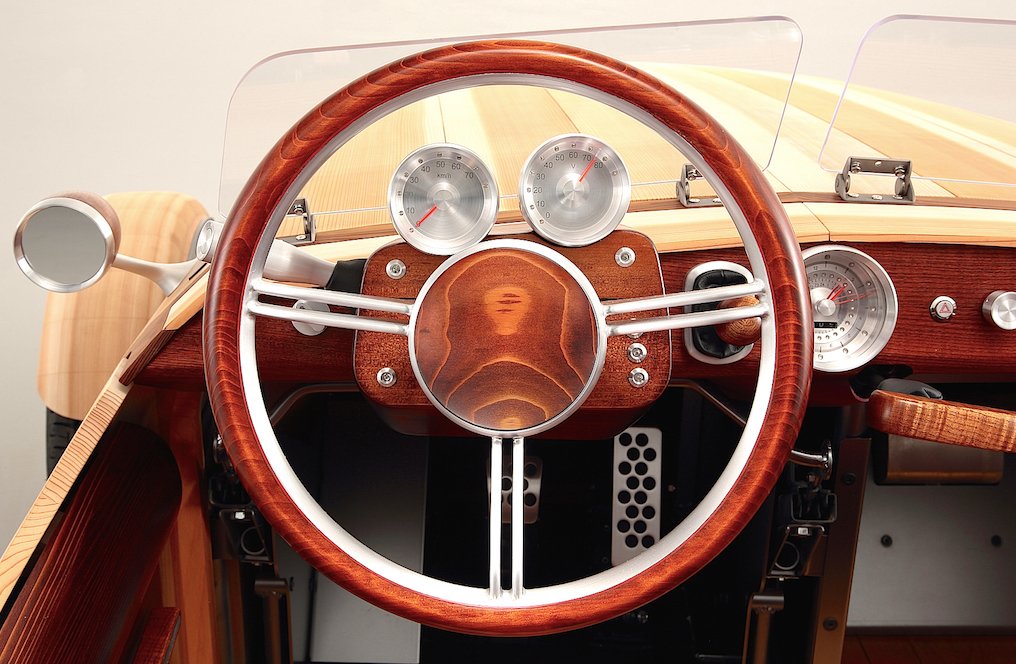 In its development of a car that makes such great use of wood, the Toyota team consulted many experts, including carpenters who specialize in building shrines and temples, and shipwrights.
In its development of a car that makes such great use of wood, the Toyota team consulted many experts, including carpenters who specialize in building shrines and temples, and shipwrights.
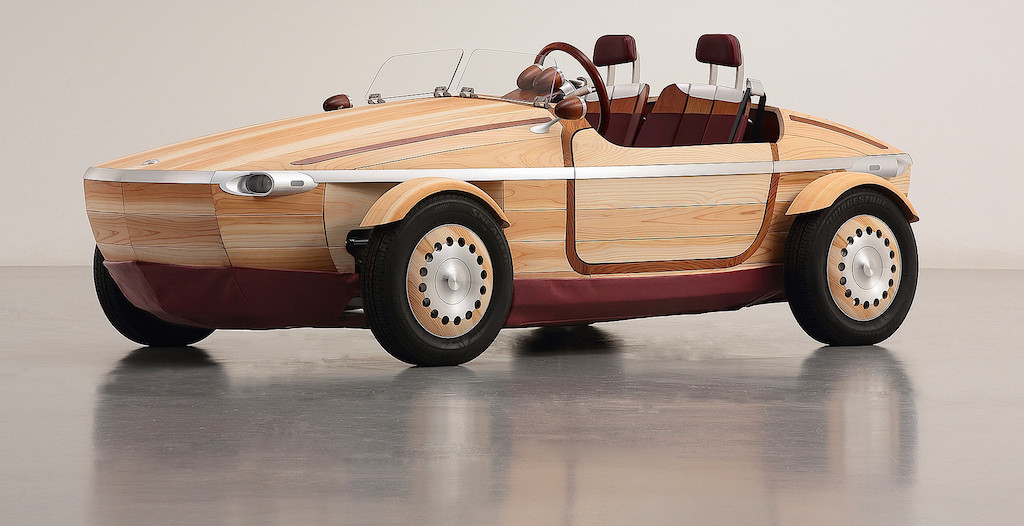 Let’s take a closer look at Setsuna and discover the remarkable beauty and craftsmanship of this petite roadster.
Let’s take a closer look at Setsuna and discover the remarkable beauty and craftsmanship of this petite roadster.
100-year Clock
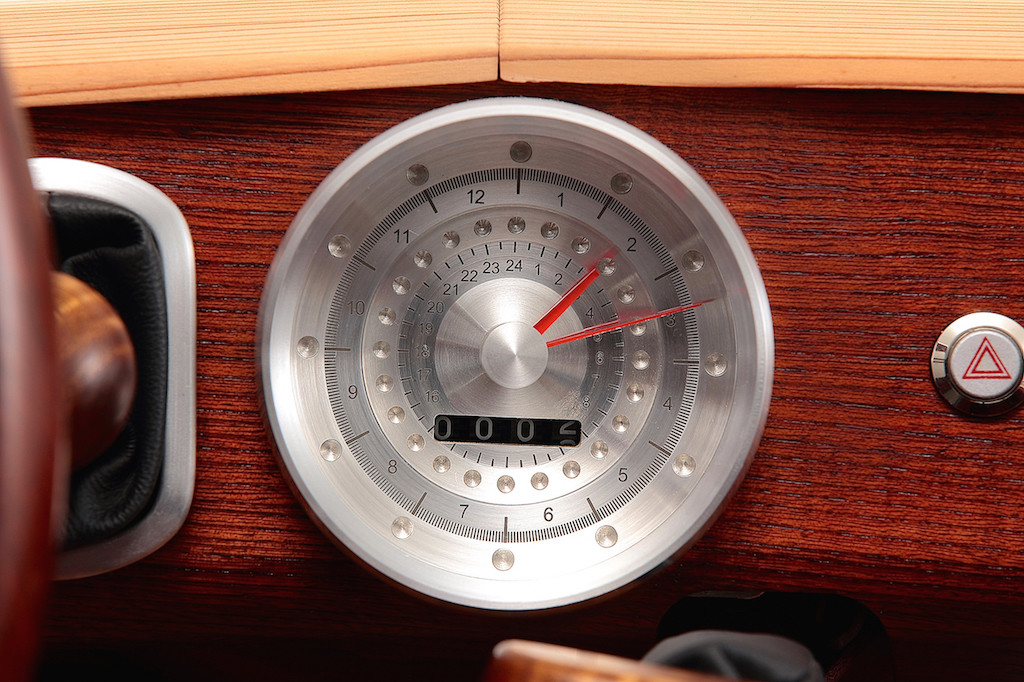 Every new car has a clock in the dashboard. The timepiece in the Toyota Setsuna doesn’t only mark the minutes and hours, it also counts the passing years. It will mark up to a century to record its years of constant service to successive generations and its evolving role as a valued member of the family in its own right.
Every new car has a clock in the dashboard. The timepiece in the Toyota Setsuna doesn’t only mark the minutes and hours, it also counts the passing years. It will mark up to a century to record its years of constant service to successive generations and its evolving role as a valued member of the family in its own right.
Setsuna Emblem
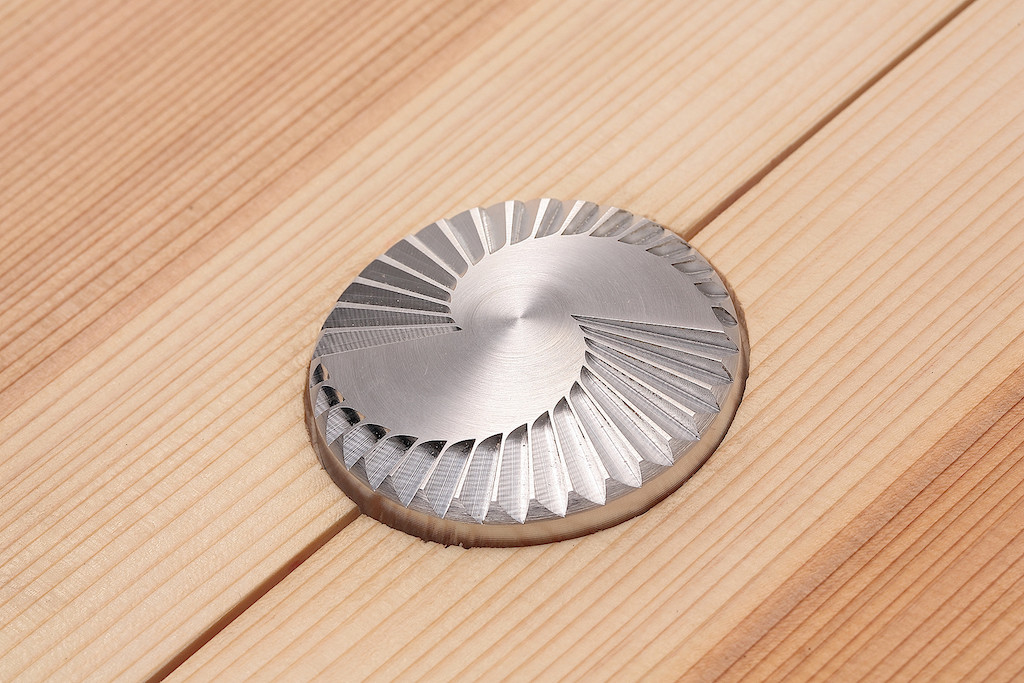 Setsuna’s circular, radial emblem captures the idea of “the accumulation of moments.” It represents both a clock face and the blooming of a flower, reflecting the designers’ wish for a growing relationship between car and family.
Setsuna’s circular, radial emblem captures the idea of “the accumulation of moments.” It represents both a clock face and the blooming of a flower, reflecting the designers’ wish for a growing relationship between car and family.
Wooden Construction
 Wood was chosen as the primary material for Setsuna’s construction, to express the idea that “love grows as time passes.” Wood changes in color and feel in direct response to the love and care shown to it. As Setsuna is passed from generation to generation, the physical changes in its wooden bodywork reflect the bond it has built with its owners and their shared experiences.
Wood was chosen as the primary material for Setsuna’s construction, to express the idea that “love grows as time passes.” Wood changes in color and feel in direct response to the love and care shown to it. As Setsuna is passed from generation to generation, the physical changes in its wooden bodywork reflect the bond it has built with its owners and their shared experiences.
Setsuna is not a piece of furniture; it is a fully functioning car, although not road-legal. For this reason, different types of wood were chosen for specific parts of the vehicle: Japanese cedar, with its vivid grain and flexibility for the exterior panels; strong and rigid Japanese birch for the frame; hard-wearing Japanese zelkova, and smooth-textured castor aralia for the seats. The panels feature different grain patterns in the cedar, achieved with straight and cross-cutting of the raw timber, creating attractive contrasts.
Okuriari and Kusabi – Japanese Joinery Techniques
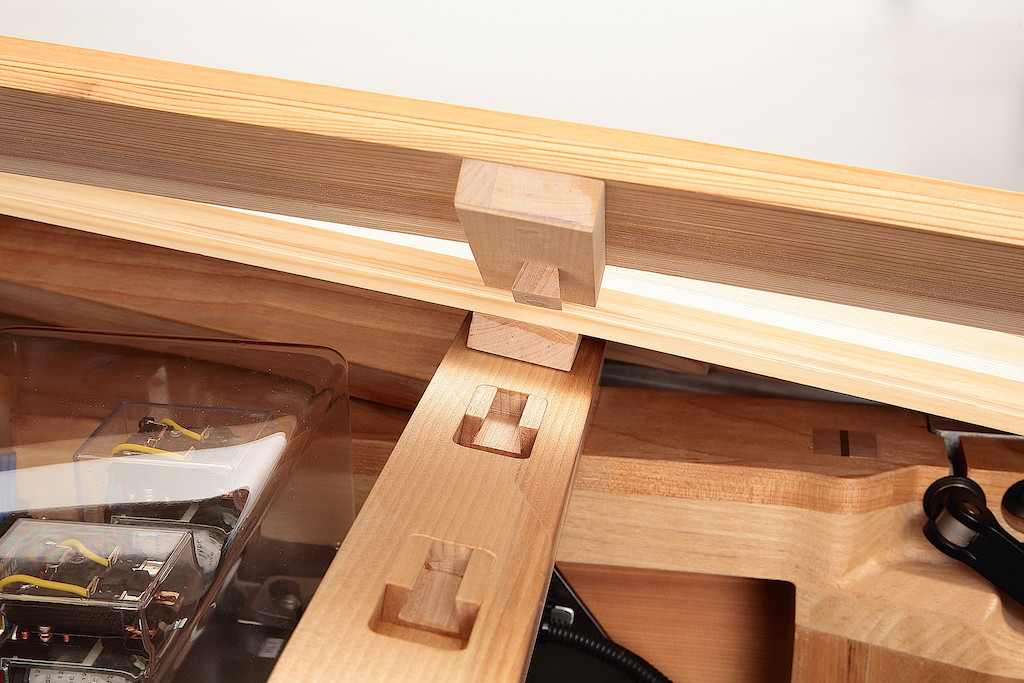 Sections of Setsuna have been crafted using traditional Japanese joinery techniques such as okuriari and kusabi. The former allows the panels to be fitted without using nails, so they can be easily removed. It makes for stronger joints and allows minor changes to be made to the mortise and dovetail joints if they become worn over time. The joints in the car’s frame feature split tenons fastened to through-tenons that pass through several component parts in the frame to give a secure hold.
Sections of Setsuna have been crafted using traditional Japanese joinery techniques such as okuriari and kusabi. The former allows the panels to be fitted without using nails, so they can be easily removed. It makes for stronger joints and allows minor changes to be made to the mortise and dovetail joints if they become worn over time. The joints in the car’s frame feature split tenons fastened to through-tenons that pass through several component parts in the frame to give a secure hold.
Replaceable Panels
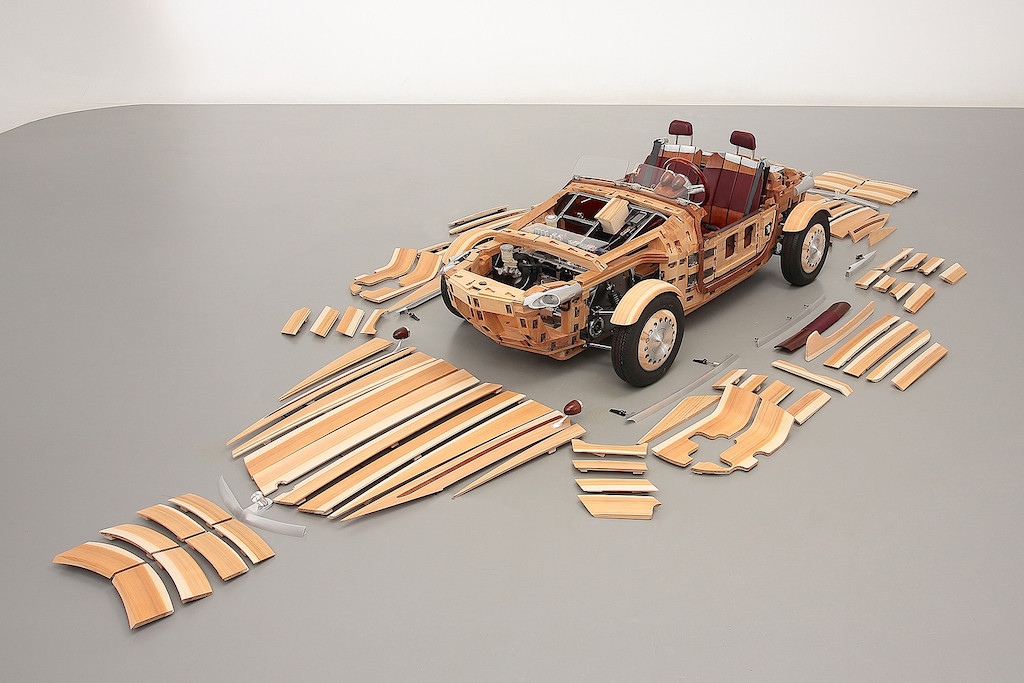 Setsuna’s body is made up of 86 handmade panels, each of which will change in appearance as the car ages. When repairs are needed, individual panels can be removed and replaced, without the whole bodywork having to be taken off. Repaired panels will bear the marks of the craftsmen who worked on them, adding to the individual character of each car.
Setsuna’s body is made up of 86 handmade panels, each of which will change in appearance as the car ages. When repairs are needed, individual panels can be removed and replaced, without the whole bodywork having to be taken off. Repaired panels will bear the marks of the craftsmen who worked on them, adding to the individual character of each car.
Wipe-lacquering
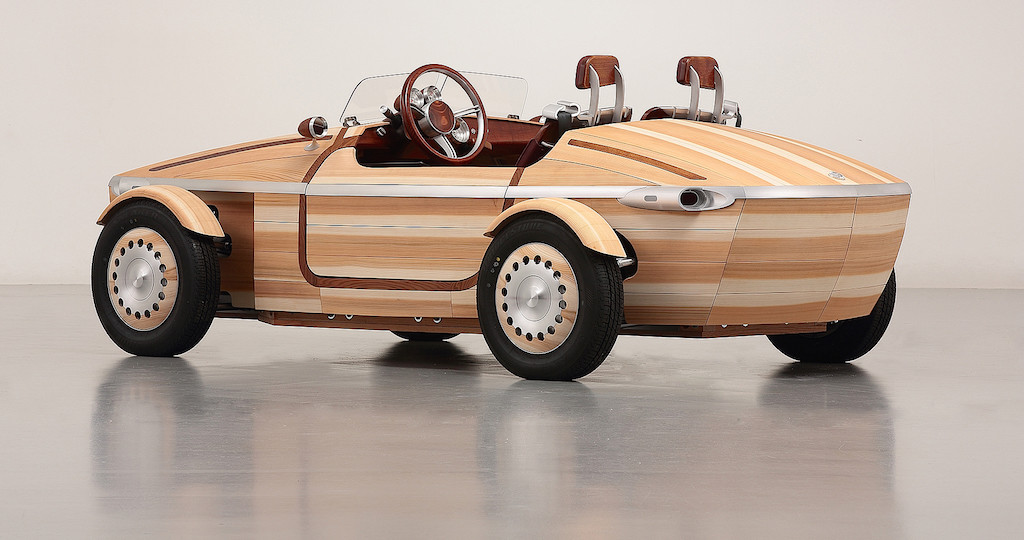 Lacquer finishing is applied by hand to bring out the beauty of the wood grain. Wipe-lacquering is applied to the door mirrors, seats, steering wheel and the banding lines on the bodywork, a technique that involves repeatedly applying the lacquer to the surface and wiping to set it along the grain of the wood to create a combined texture. Color and intensity will change with use over time to give the vehicle a different appearance at different moments in its lifecycle.
Lacquer finishing is applied by hand to bring out the beauty of the wood grain. Wipe-lacquering is applied to the door mirrors, seats, steering wheel and the banding lines on the bodywork, a technique that involves repeatedly applying the lacquer to the surface and wiping to set it along the grain of the wood to create a combined texture. Color and intensity will change with use over time to give the vehicle a different appearance at different moments in its lifecycle.
Cradling Seats
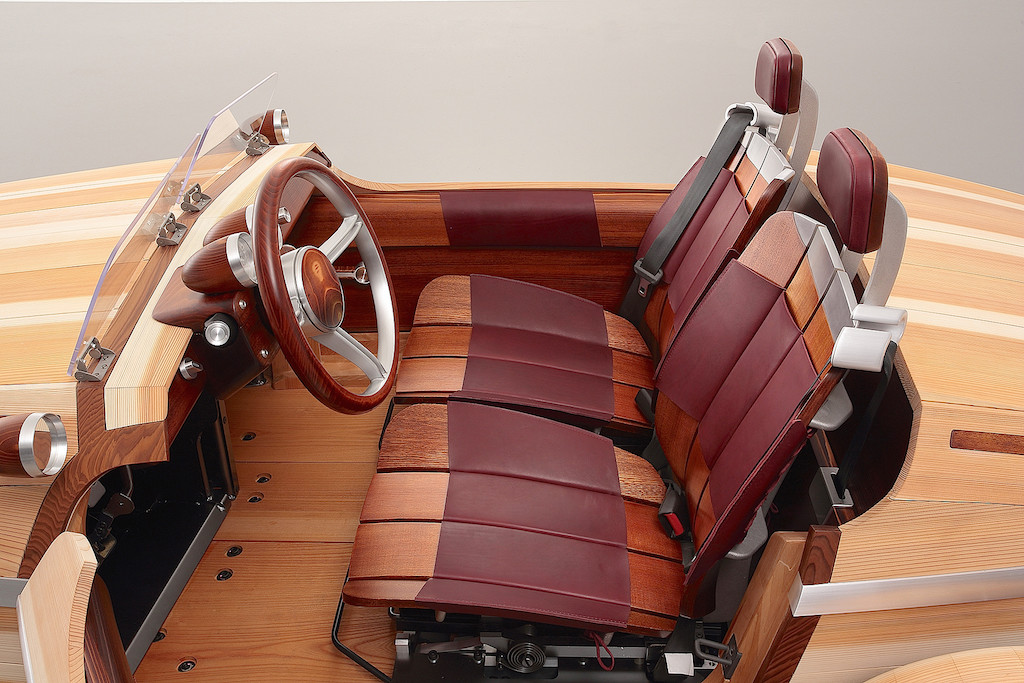 The seats have been designed to be comfortable and inviting to anyone, in the same fashion as a park bench. The castor aralia timber has been lacquered and the parts which come into most contact with the body are covered with leather.
The seats have been designed to be comfortable and inviting to anyone, in the same fashion as a park bench. The castor aralia timber has been lacquered and the parts which come into most contact with the body are covered with leather.
Aluminium Contrasts
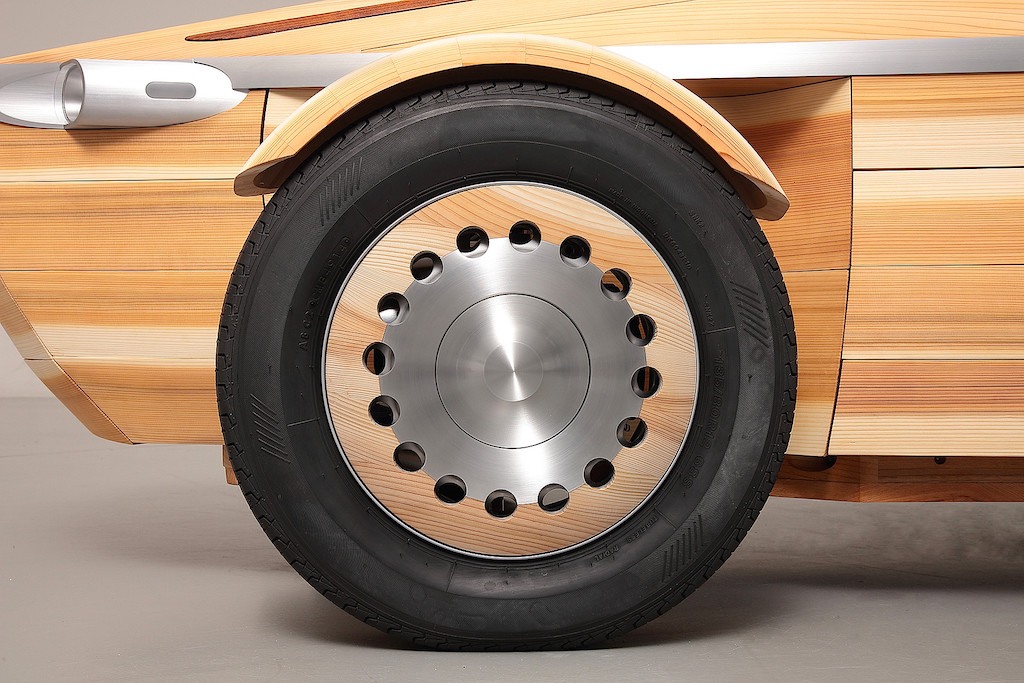 Aluminium is used for parts such as the wheel caps, steering wheel and seat frames, creating both contrast and harmony with Setsuna’s wooden features.
Aluminium is used for parts such as the wheel caps, steering wheel and seat frames, creating both contrast and harmony with Setsuna’s wooden features.
Curving Body Lines
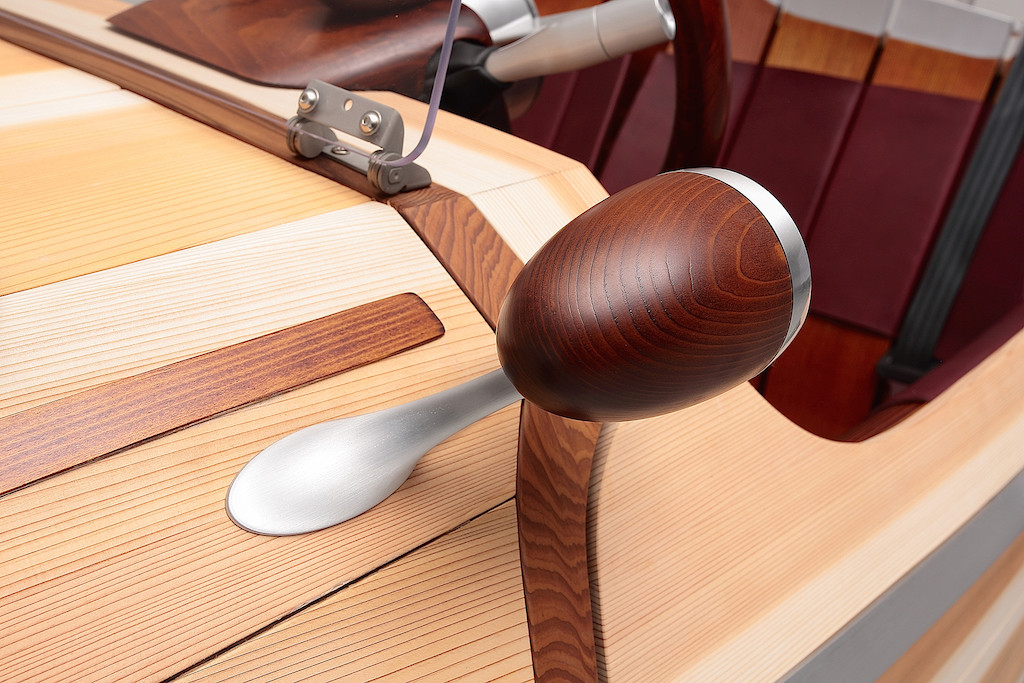 Setsuna’s wooden elements will slowly bend over time, giving the body a pronounced, beautiful curve, rather like a boat. The front presents a heptagonal shape while, viewed from the side or above, the car’s form is elliptical.
Setsuna’s wooden elements will slowly bend over time, giving the body a pronounced, beautiful curve, rather like a boat. The front presents a heptagonal shape while, viewed from the side or above, the car’s form is elliptical.
The electric motor-powered Setsuna measures 3,030mm long and 1,480mm wide. A two-seater, it stands 970mm tall and has a 970mm wheelbase.
News source and photos courtesy of Toyota Motor Corp., Toyota Europe, and Toyota UK
Story (commentary) © 2016 CarNichiWa.com